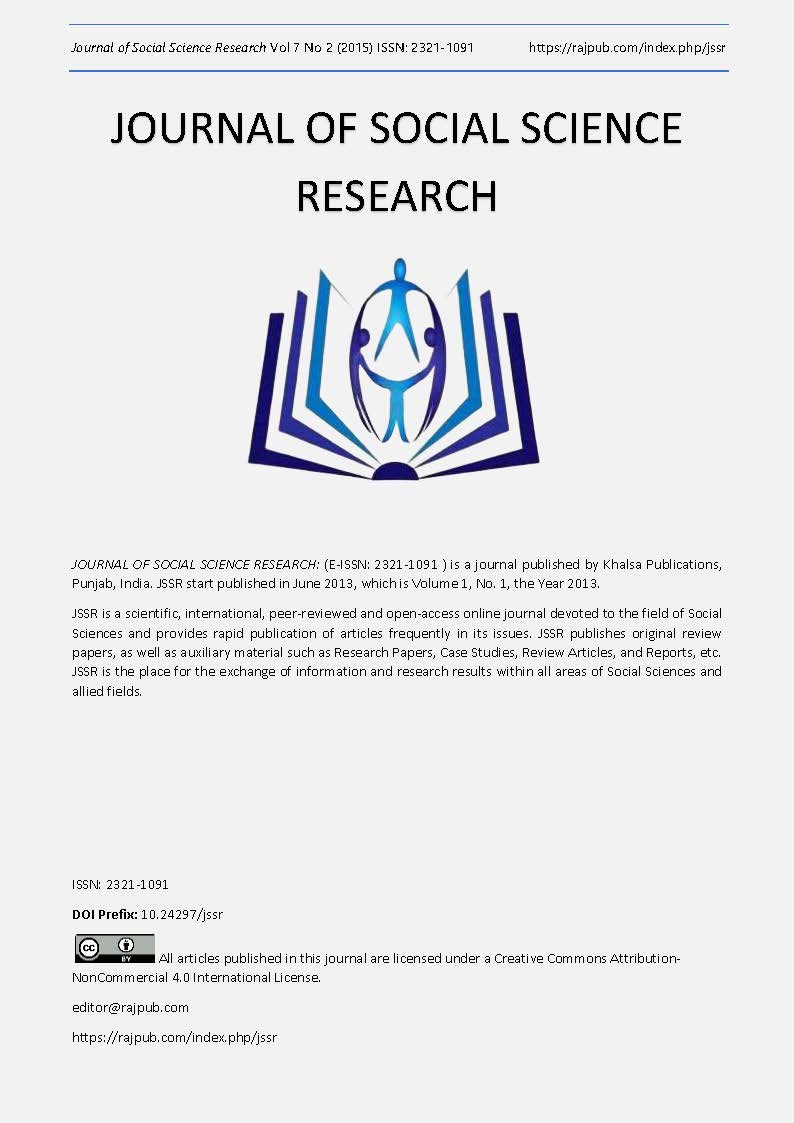DECOMPOSITION OF SBM TECHNICAL EFFICIENCY OF THE SECONDARY EDUCATION SYSTEM INTO RADIAL EFFICIENCY AND MIX EFFICIENCY: A STATE-WISE ANALYSIS IN INDIA
DOI:
https://doi.org/10.24297/jssr.v7i2.3566Keywords:
Radial efficiency, Non-radial efficiency, Technical Efficiency, Pure Technical Efficiency, Scale efficiency, Mix efficiency, Slack Based measres, Variable returns to Scale, EducationAbstract
This paper is an attempt to decompose the non-radial technical efficiency in terms of a scalar called SBM of efficiency (input Oriented) of the performances of 23 states of India in the 10th class examination. Applying CCR, BCC and SBM models for five inputs and two outputs obtained from the Statistics of school education, 2010-11 (MHRD, Govt. of India), the efficiency scores were computed and the SBM efficiency scores were decomposed into technical efficiency, pure technical efficiency, scale efficiency and mix efficiency. The mean TE scores are 0.86 with a SD of 0.17 and mean PTE score of 0.92 with SD of 0.09. Out of 23 states 10 states achieved MPSS status and 13 states were in efficient. As per the SBM score, out of 23 states 10 states fully SBM efficient with score equals to 1 and hence they are TE, PTE and Scale efficient implying most productive scale size. But more than half of the states (13) are inefficient with Assam being the lowest performer (0.18) followed by Kerala (0.22), Rajasthan (0.25) and Chhattisgarh (0.31). The states with low SBM score due to PTE and MIX are Assam, Karnataka, Maharastra, Odisha, Rajasthan and UP. The states having low score due to low PTE and low SE are Assam and Karnataka. The states with low SBM score due to low PTE, MIX and SE are Assam and Karnataka. The study emphasizes, merger of small private schools, increase in the appointment of both trained male and female teachers, Creation of more class rooms. One important implication of the result is that the state should focus more on the giving special coaching to the SC/ST students and the girl students especially in English, math and science.
Downloads
Downloads
Published
How to Cite
Issue
Section
License
 All articles published in Journal of Advances in Linguistics are licensed under a Creative Commons Attribution 4.0 International License.
All articles published in Journal of Advances in Linguistics are licensed under a Creative Commons Attribution 4.0 International License.




